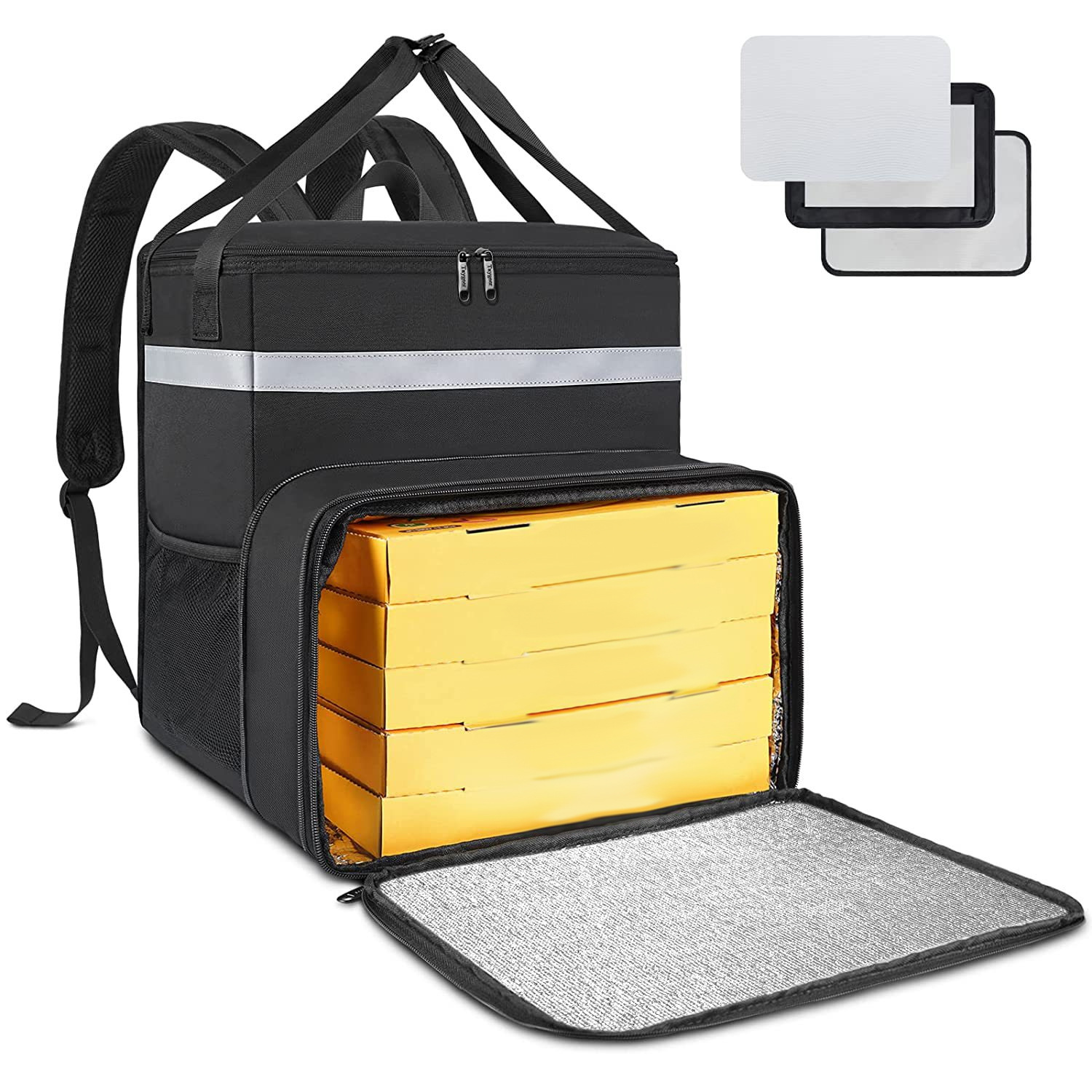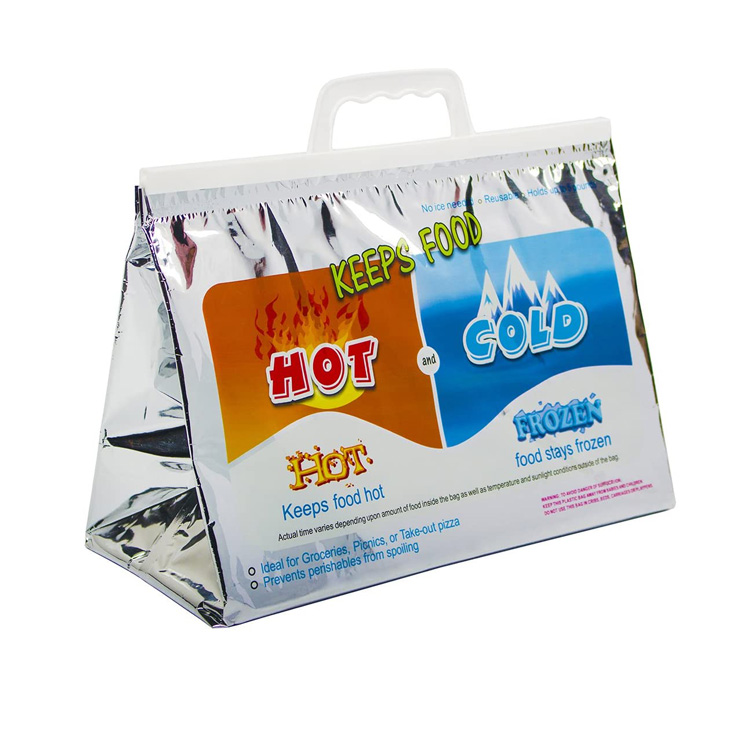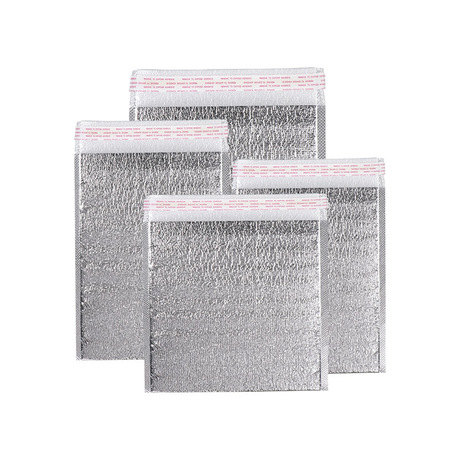In today’s booming food delivery and shipping landscape, the importance of ensuring perishable foods arrive at their destination in top – notch condition cannot be overstated. This is where food shipping Paket es step in as unsung heroes. But what exactly are these ice packs, and how do they safeguard the freshness of our food? Let’s embark on a journey to uncover the crucial role they play in the food – shipping industry.
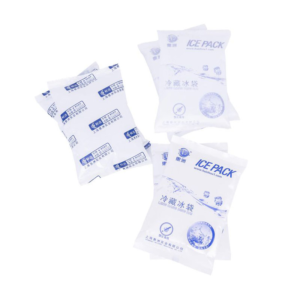
The Science Underpinning Food Shipping Ice Packs
Food shipping ice packs operate on a fundamental principle: heat absorption. They are meticulously engineered to draw heat away from the surrounding environment within the shipping container, thereby creating and maintaining a cool haven for the food items inside. The majority of these ice packs are filled with either a specialized gel or a water – based solution. As the ambient temperature around the ice pack starts to climb, the gel or water within begins to absorb this excess heat. While the ice pack gradually warms up during this process, its unique chemical composition enables it to store a substantial amount of heat energy before it fully melts. This continuous and efficient heat – absorption mechanism is the key to keeping food at a safe temperature, effectively preventing spoilage and the proliferation of harmful bacteria.
Diverse Types of Food Shipping Ice Packs
Gel – Filled Ice Packs
Gel – filled ice packs are a favorite choice in the food – shipping domain. The gel housed within these packs boasts a high heat – capacity, which means it can soak up a large quantity of heat and remain cold for an extended period. Their flexibility is another major plus. They can easily conform to the contours of different – sized shipping containers and fit snugly around various food items, whether it’s a large slab of meat or a delicate bunch of berries. Lebih-lebih lagi, gel – filled ice packs are typically designed to be leak – proof. This feature is crucial as it ensures that there are no messy spills that could potentially contaminate the food, maintaining the highest standards of food safety.
Reusable Ice Packs
For those with an eye on environmental sustainability, reusable ice packs are an excellent option. Crafted from materials like food – grade silicone or other durable substances, these ice packs are built to last. After each use, they can be simply refrozen and reused for subsequent food shipments. This not only significantly reduces waste but also leads to long – term cost savings. Some advanced reusable ice packs come equipped with features such as insulated covers, which enhance their heat – retention capabilities, or built – in temperature indicators. These indicators provide real – time temperature information, allowing shippers to monitor the cooling performance of the ice pack and ensure the food’s integrity.
Disposable Ice Packs
Disposable ice packs offer unrivaled convenience for one – time use scenarios. They are often pre – frozen and ready to be used straight out of the package. This makes them an ideal choice for short – distance food deliveries, where the need for a quick and easy cooling solution is paramount. They are also a great option for situations where the ice pack will not be retrievable, such as in single – use delivery boxes. Selain itu, their relatively low cost makes them a cost – effective choice for small – scale food shippers who may not have the resources to invest in more expensive cooling solutions.
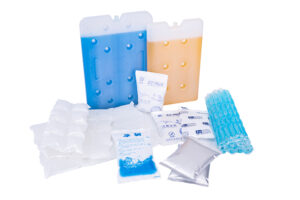
The Multifaceted Advantages of Food Shipping Ice Packs
Preserving Food Freshness
At the heart of their utility, food shipping ice packs excel at maintaining food freshness. By keeping the temperature low, they slow down the natural degradation processes that occur in food. This is especially critical for highly perishable items such as fresh produce, dairy products, and meats. Misalnya, fresh fruits and vegetables can retain their crisp texture and vibrant flavors during transit, and meats can remain free from bacterial growth, ensuring that they are not only delicious but also safe for consumption when they reach the end – user.
Cost – Efficiency
When compared to other cooling methods in food shipping, like dry ice, ice packs often come out on top in terms of cost – effectiveness. They are generally easier to handle and store, requiring no special handling equipment or storage facilities. The fact that many ice packs can be reused further reduces the overall cost of shipping perishable foods. Selain itu, the reduced risk of food spoilage due to proper cooling means less food waste. This not only saves money for shippers but also contributes to a more sustainable food – shipping ecosystem.
Safety and Regulatory Compliance
Food shipping ice packs are designed with food safety as the utmost priority. They are made from non – toxic materials, ensuring that they do not contaminate the food they are intended to protect. This is essential for meeting both local and international food safety regulations and standards. Whether it’s a local grocery delivery or an international food export, using ice packs that meet strict safety requirements gives both shippers and consumers the peace of mind that the food they handle or consume is free from any harmful contaminants.
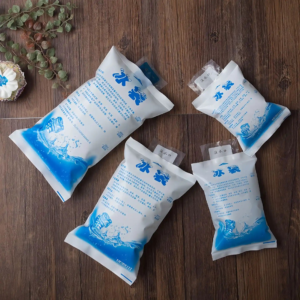
Common Real – World Usage Scenarios
Online Grocery Delivery
With the explosive growth of online grocery shopping, food shipping ice packs have become indispensable. From the freshest of fruits and vegetables to frozen meats and dairy products, ice packs ensure that these items stay at the right temperature throughout the delivery journey. This guarantees that customers receive high – quality groceries, just as fresh as if they had picked them up from the store themselves.
Restaurant Food Delivery
Restaurants that offer takeout or delivery services also heavily rely on ice packs to maintain the quality of their food. Whether it’s a refreshing salad, a decadent cold dessert, or a meal with perishable ingredients like fresh seafood or delicate herbs, ice packs help to preserve the food’s integrity. This ensures that customers can enjoy their meals at home with the same level of satisfaction as they would in the restaurant.
Long – Distance Food Shipping
For food products that need to travel long distances, such as specialty foods or food products for export, ice packs are an absolute necessity. Depending on the type of ice pack and the quality of the shipping container’s insulation, they can maintain the required low temperature for days on end. This ensures that the food arrives at its destination in the exact same condition as when it was first shipped, regardless of whether it’s crossing state lines or international borders.

Mastering the Effective Use of Food Shipping Ice Packs
Pra – cooling and Preparation
Proper pre – cooling and preparation are essential steps before using ice packs. Gel – filled ice packs should be placed in the freezer for several hours, preferably overnight, to reach their optimal cold temperature. This ensures that they have maximum cooling capacity when needed. For reusable ice packs, it’s crucial to clean them thoroughly and ensure they are free from any contaminants before refreezing. This helps to maintain their performance and prevent any potential cross – contamination. Disposable ice packs, if not already pre – frozen, should be stored in the freezer until they are ready to be used.
Strategic Placement in the Shipping Container
When packing food for shipping, the placement of ice packs is crucial. They should be positioned as close as possible to the perishable food items. Misalnya, when shipping a box of fresh seafood, the ice packs should be placed on the sides and top of the seafood container. This allows for the even distribution of cold air, ensuring that the food stays at a safe temperature throughout the journey.
Determining the Right Quantity
The number of ice packs required depends on several factors, including the size of the shipping container, the type of food being shipped, and the expected duration of the journey. Larger containers or longer – distance shipments typically require more ice packs to maintain the desired temperature. It’s also important to consider the heat – generating capacity of the food itself. Misalnya, freshly baked bread or hot – packed foods release heat, so more ice packs may be needed to counteract this initial heat and keep the food at a safe temperature.
Essential Precautions
Preventing Leakage
Although most ice packs are designed to be leak – proof, it’s still vital to inspect them carefully for any signs of damage before use. Even a small puncture or tear can lead to leakage, which can contaminate the food and render it unsafe for consumption. If any damage is detected, the ice pack should be immediately discarded, and a new one should be used.
Pemantauan suhu
For some highly perishable foods, such as certain types of seafood or medical – grade food products, it may be necessary to monitor the temperature inside the shipping container. This can be done using a thermometer or a more advanced temperature – monitoring device. By regularly checking the temperature, shippers can ensure that it remains within the safe range for the food. If the temperature starts to rise above the recommended level, it could be an indication that more ice packs are needed or that the insulation of the shipping container is insufficient. Immediate action can then be taken to rectify the situation and protect the food.
In conclusion, food shipping ice packs are an integral part of the modern food – shipping ecosystem. By understanding their various types, the numerous advantages they offer, the common usage scenarios, and the proper ways to use them, shippers can ensure that their perishable food products reach their destination in the best – possible condition. This, in turn, provides consumers with fresh, aman, and high – quality food, enhancing the overall food – consumption experience.







